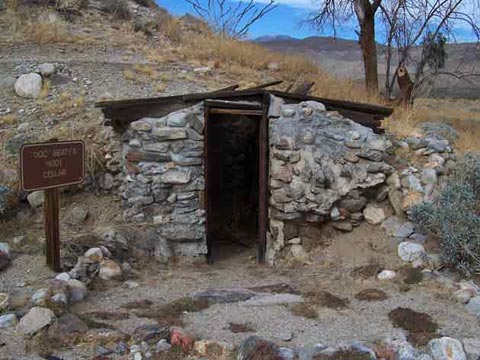|

Warner-Carrillo Adobe beside S-2 near Warner Springs
ANZA-BORREGO NORTH :
HISTORY
California was a seldom-visited Spanish province for two hundred years,
and then briefly a Mexican state, before it was admitted to the Union on
September 9, 1850.
In the 1770s, Juan Bautista de Anza made two journeys through northern
Anza-Borrego that would lead to the colonization of San Francisco. The route
crossed the Colorado River at Mexico, circled into today's Mexico to avoid
the Algodones Dunes, turned north at the Yuha Desert, passing San Sebastian
Marsh and Borrego Sink before heading
up Coyote Creekto Nance Canyon.
Some 50 years later, a new route up the San Felipe Valley to Warner's replaced
the Anza trail. In the 1850s, after the California Gold Rush and statehood,
stagecoach service across the desert became available, the best known being
the Butterfield Overland Mail.
In the late 1800s, cattlemen found reason to explore Anza-Borrego as a
place to graze their animals. Fred Clark bought the La
Puerta property at Anza. His brother Frank bought a property six miles
east. Together they built the first well at Clark
Dry Lake.
One of the first to take up farming in Anza-Borrego was Doc Beaty who arrived
in 1913. He had success at a site now occupied by the Vern Whitaker Horse
Camp. Among his other accomplishments was building the Truckhaven Trail
from Borrego Springs to the Truckhaven Cafe at Salton City.

Beaty Household Root Cellar
Photo: Betsy Knaak
|